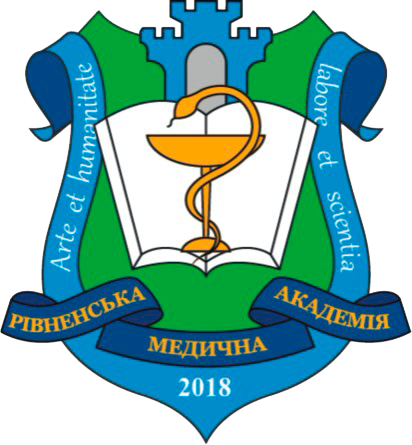METHODS OF PHYSICAL REHABILITATION OF PATIENTS WITH ISCHEMIC STROKE
DOI:
https://doi.org/10.32782/health-2023.2.11Keywords:
ishemic stroke the functional method, using of physical rehabilitation tools, compensatory changes in the motor system, dynamic motor function, “hemiparesis”, “hemiplesia”.Abstract
The purpose of our research is to develop and justify the functional method of using physical rehabilitation tools in restoring the motor functions of patients with ischemic stroke in the area of the internal carotid artery, taking into account the psychological state of the patient, the ontogenetic features of the restoration of his/her postural and dynamic functions, and the biomechanical laws of the formation of compensatory changes in the motor system of the individual. Research methods. In the system of measures for physical rehabilitation of patients with ischemic stroke, one of the most important points it is control of the patient’s level of adaptation capabilities. Risk factors from the side of the cardiovascular system are: the degree of atherosclerosis, arterial hypertension, especially the increase in blood pressure over 200 mm Hg. art and diastolic is – more, than 110 mm Hg. art, increased blood viscosity, blood pressure fluctuations, for example, with heart rhythm disorders. Patients, having been included into the research, were selected by the method of randomization using a Table of random numbers (Paired Design Technology was used by us). Patients of the control group received a complex of rehabilitation measures using physical exercises (according to the classical method, proposed by us. To assess the psychological status of the patient, the eight-color test of M. Lüscher was used. The results of the research. According to all patients of the experimental and control groups, during the entire period of inpatient treatment, the following data were analyzed daily: well-being, frequency and nature of pain sensations, other complaints (shortness of breath, palpitations, sleep and mood disorders, tolerability of restorative treatment procedures). A clinical, functional and psychological examination was conducted for all patients before and after the complex rehabilitation course. Conclusions. The study of the initial state of voluntary motility of ischemic stroke patients at the beginning of the physical rehabilitation course showed the presence of disorders of static and dynamic motor function of the arm, leg, coordinated action of the arms and legs, head, trunk, but quite different in their explanation in the studied groups of patients. The state of motor functions of patients with ischemic stroke is characterized in such a way: on the affected side, the maximum values of the volume of active and passive movements of strength and muscle tone are diagnosed in the “hemiparesis” subgroup, the smallest one – is in the “hemiplesia” subgroup. On the side of the lesion lacuna, the most pronounced muscle strength and tone are diagnosed in the subgroup “hemiparesis”, the largest amount of active and passive movements, in turn, there are in the subgroup “plesia + paresis”, “hemiparesis”.
References
Онуфрієва Л., Івашкевич Ед. The development of learner’s autonomy by the way of the formation of social intelligence. Збірник наукових праць «Проблеми сучасної психології». Вип. 51. 2021. С. 9–32. URL: https://doi.org/10.32626 /2227-6246.2021-51.9-32.
Роговик Л.С. Шкала психомоторної активності. 2013. URL: ecopsy.com.ua/data/zbirki/2003_01/sb01_57.pdf.
Харченко Є., Куриця Д. Psychological ways of providing primary medical sanitary help for people who use psychoactive substances. Збірник наукових праць «Проблеми сучасної психології». Вип. 51. 2021. С. 215–240. URL: https://doi.or g/10.32626/2227-6246.2021-51.215-240.
Харченко Є.М., Михальчук Н.О. Методика вимірювання обсягу активних рухів в суглобах кінцівок хворого на ішемічний інсульт. Методичний посібник. Рівне : РДГУ, 2022a. 108 с.
Харченко Є.М., Михальчук Н.О. Функціональна методика фізичної реабілітації хворих на ішемічний інсульт. Методичний посібник. Рівне : РДГУ, 2022b. 134 с. 1. Цветовой тест М. Люшера. 2012. URL: https://psyfactor.org/lib/lusher.htm.
Hardeman Rachel R., Medina Eduardo M., Kozhimannil Katy B. Structural Racism and Supporting Black Lives – The Role of Health Professionals. New England Journal of Medicine. Vol. 375(22). 2016. P. 2113–2115. URL: https://doi. org/10.1056/NEJMp1609535.
Hayden F.G., Farrar J., Peiris J.S. Towards improving clinical management of Middle East respiratory syndrome coronavirus infection. Lancet Infect Dis. Vol. 14(7). 2014. P. 544–546. URL: https://doi.org/10.1016/S1473-3099(14)70793-5.
Kharchenko Ye., Komarnitska L. Theoretical foundations of psychological and physical rehabilitation of patients with ischemic stroke. Збірник наукових праць «Проблеми сучасної психології». Вип. 52. 2021. С. 275–298. URL: https://doi.org/ 10.32626/2227-6246.2021-52.275-298.
Kharchenko Ye., Vashchenko I. The peculiarities of the correction of psychomotor disorders of patients with ischemic stroke: the psychological aspect. Збірник наукових праць «Проблеми сучасної психології». Вип. 53. 2021. С. 284–305. URL: https://doi.org/10.32626/2227-6246.2021-53.284-305.
Khwaja A. KDIGO clinical practice guidelines for acute kidney injury. Nephron Clin Pract. Vol. 120. 2012. P. 179–84.
Mykhalchuk N., Pelekh Yu., Kharchenko Ye., Ivashkevych Ed., Ivashkevych Er., Prymachok L., Hupavtseva N., Zukow W. The empirical research of the professional reliability of 550 doctors during the COVID-19 pandemic in Ukraine (March-June, 2020). Balneo Research Journal. Vol. 368, 11(3), September 2020. 2020. P. 393–404. URL: http://dx.doi. org/10.12680/balne.
Onufriieva L., Chaikovska O., Kobets O., Pavelkiv R., Melnychuk T. Social Intelligence as a Factor of Volunteer Activities by Future Medical Workers. Journal of History Culture and Art Research. Vol. 9(1). 2020. P. 84–95. URL: http:// dx.doi.org/10.7596/taksad.v9i1.2536
http://apps.webofknowledge.com/full_record.do?product=WOS&search_mode=GeneralSearch&qid=3&SID=C2ro oGzb9Eyq4lCkoTY&page=1&doc=1.
Villar J., Blanco J., del Campo R. Spanish Initiative for Epidemiology, Stratification & Therapies for ARDS (SIESTA) Network. Assessment of PaO/FiO for stratification of patients with moderate and severe acute respiratory distress syndrome. BMJ Open. Vol. 5(3). 2015. URL: http://10.1136/bmjopen-2014-006812.





